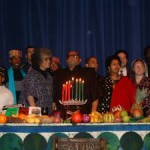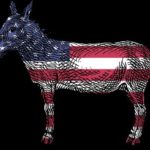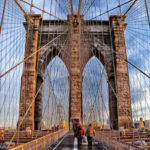The Beginnings Of The Boston Marathon
The history of the Boston Marathon dates back to the turn of the 20th century. However, it is much more than a marathon. It commemorates another important part of American History, carried forward into the modern-day Boston Marathon.
Developing The Idea Of The Boston Marathon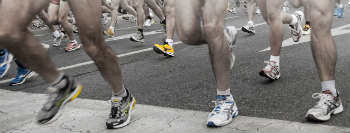
In 1896, some people scowled at the thought of Americans competing in, much less having the opportunity to win in the newly revived Olympics, held in Athens 1896. Yet, founders and members of the Boston Athletic Association (BAA) paid doubters no mind and proudly set out on the trip to Athens to compete in numerous events.
The Boston Globe recounts information from the book The B.A.A. at 125: The Official History of the Boston Athletic Association, 1887-2012, detailing the events that occurred when the 14-man delegation from the United States participated in the Olympics. In one event after another, the Americans outperformed other competitors, leaving spectators stunned at the Americans’ performance.
One final hope was that a Greek would be victorious in the newly added race, named after the ancient battle fought at Marathon. The BAA explains that upon victory at Marathon, foot soldier and messenger Pheidippides allegedly ran 40 kilometers to announce their victory, collapsing after announcing “Rejoice! We Conquer!” The Greeks were victorious in the reincarnated Marathon race, cheering on Spiridon Louis as he crossed the marathon finish line.
After returning to the United States, U.S. Olympic Team Manager and BAA member John Graham eagerly set about organizing a marathon race to take place in Boston, Massachusetts.
Planning For The First Marathon
John Graham presented his idea for a marathon to be held in Boston to local businessman Herbert H. Holden. The two men held discussions, planned specific details such as the distance, and proposed routes.
After collaborating on the specifics, the final decisions included that the first Boston Marathon would take place along a course distance measuring 24.5 miles. Many considerations went into the planning of the first Boston Marathon, including American History details that some people may not realize.
When Graham and Holden started planning a marathon in Boston, the idea included much more than incorporating ideas taken from the ancient Greeks or the recent Olympics. The men wanted to incorporate America’s own history into the Boston Marathon.
The Atlantic explains that the two organized the event so that it took place on Patriot’s Day, a day that commemorated the battles at Lexington and Concord and first bloodshed of the Civil War as the anniversary of the birth of liberty and union. The original plan for the course of the Boston marathon was to retrace the steps of the original Patriots, leading runners from Concord through Lexington and back to Boston. However, the route was barely 20 miles long.
By this time, Olympic medalist Tom Burke joined Holden and Graham in planning the first Boston Marathon. The organizers redesigned the route, which started at Ashland, taking participants to the end of the race at Irvington Oval in Boston.
Running The First Marathon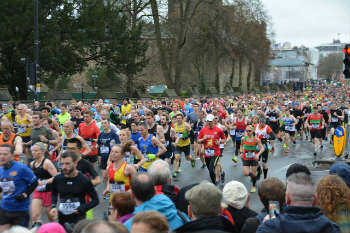
On April 19, 1897, runners lined up at the starting point of the inaugural Boston Marathon. Some sources vary regarding the number of runners participating that day. While The Atlantic indicates that “Fifteen young amateurs” started the race, The Boston Globe states that there were 18 of them. Whatever the correct number of runners, all took off at 12:19 pm when Burke gave the signal to go!
They ran only a matter of yards before slowing their pace, taking into account the long route of the first Boston Marathon. Spectators cheered the runners on along the route.
Close to the end of the race, New York runner John McDermott passed other runners and crossed the finish line to the cheers of thousands of spectators. He completed the first Boston Marathon in better time than Spiridon Louis ran at Athens. Since 1897 the marathon was set and, it has become an event that attracts more than 500,000 spectators and on average over 30,000 participants annually.



